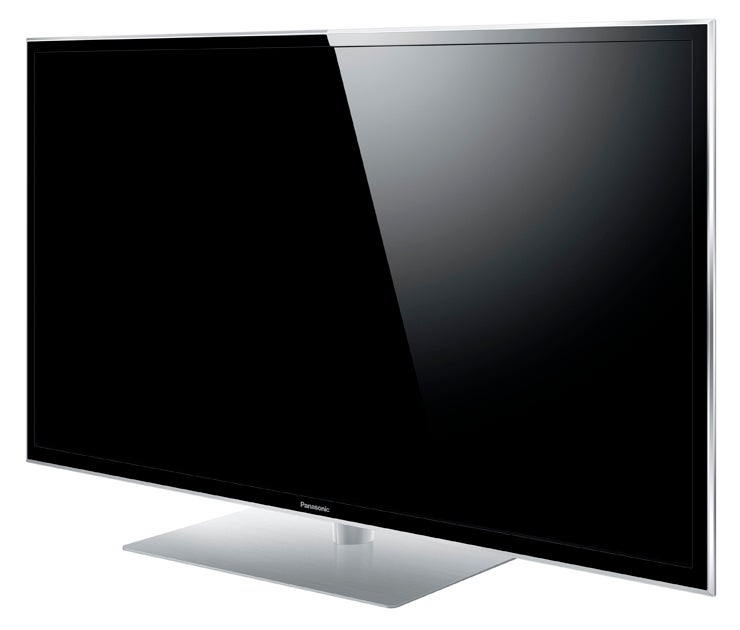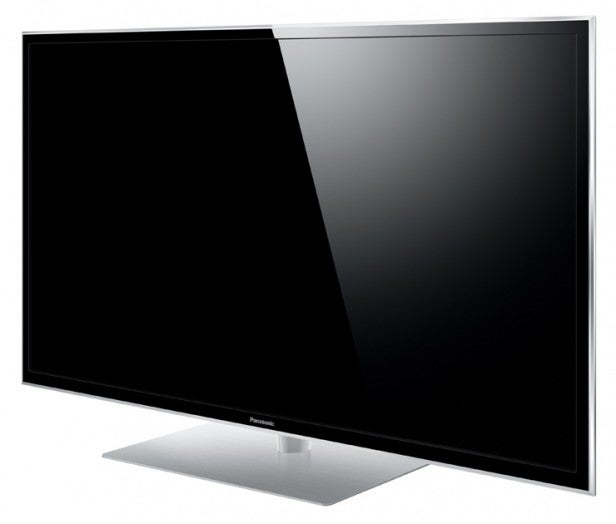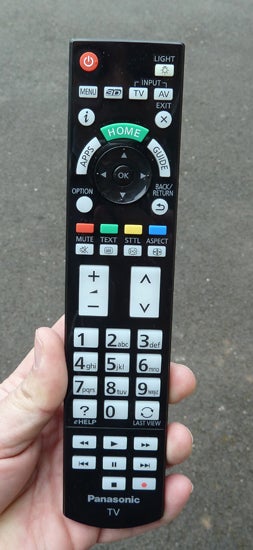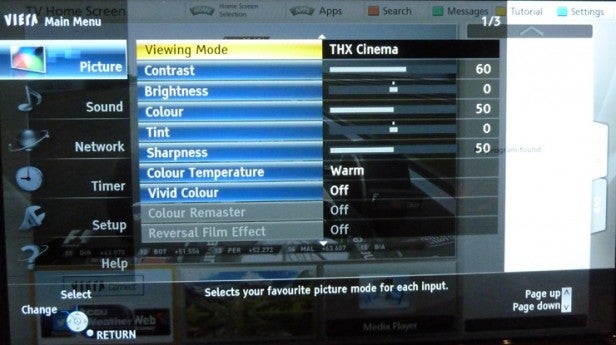Panasonic TX-P42GT60 Review
Panasonic TX-P42GT60
Panasonic's first plasma TV of 2013 is so good it's scary.

Sections
- Page 1 Panasonic TX-P42GT60 Review
- Page 2 Operating System & Picture Quality Review
- Page 3 Picture Quality & Conclusions Review
Verdict
Pros
- Groundbreaking 2D and 3D picture quality
- Brilliantly thought through and straightforward interface
- Good multimedia support
Cons
- Touch Pen feature is silly
- Missing LoveFilm and some TV catch-up services
- Design is just so-so
Key Specifications
- Review Price: £1149.00
- 42in plasma TV
- Active 3D playback (2 pairs of glasses included)
- Viera Connect online features
- THX and ISF certified
- multimedia playback via USB
Introduction
Despite kicking off its 2013 telly season with a series of LCD models and repeatedly suggesting that its plasma future is looking bleak, Panasonic still hasn’t totally given up on plasma technology. In fact, on the evidence of the Panasonic P42GT60 under the microscope today, the brand seems to have gone into plasma overdrive – keen, perhaps, to squeeze the very last drop of quality out of the format before its death knell sounds.
Panasonic P42GT60 – Design & Touch Pen Madness
Having just set the Panasonic P42GT60 up for a glowing review, though, we’ve got a big moan to get off our chests. The thing is, for no good reason we can come up with, Panasonic is shipping an Electronic Touch Pen with its GT60 models. This pen is very easy on the eye, pairs simply with the TV, and works perfectly well. Pity, then, that to us writing directly on your TV screen is one of the most pointless, potty and quite possibly unsafe ideas ever to emerge from the AV world. 
Seriously, why would you want to stand up, walk over to your TV and start doodling on it? Or why on earth in this age of tablet computers and smart phones would anyone want to use a pen on a TV screen to play a game? Remarkably you can actually pair two pens with the Panasonic P42GT60 if you like. But all that would be doing is making the feature twice as pointless.
The only other thing that’s a genuine let down is the Panasonic P42GT60’s design, which is best described as fair. The frame around the screen is passably trim by plasma standards at around an inch wide, and a bit of panache is injected into proceedings by a shiny metallic outer trim. The ‘hairline finish’ metal stand is classy as well. It’s impossible to deny, though, that Panasonic’s LCD TVs this year look far more glamorous, with their super-slim bezels and ‘glass and metal’ finishes.
Panasonic P42GT60 – Connections
So that’s the bad-ish bits out-of-the-way…
The Panasonic’s P42GT60‘s connectivity is mostly strong, with highlights of three USBs (for recording from the digital tuners as well as playing back multimedia), an SD port, built-in Wi-Fi and a LAN port. It is a bit disappointing, though, to find a TV as ‘serious’ as the Panasonic P42GT60 only sporting three HDMIs when most of its rivals deliver at least four. All the AV connections can be accessed from the side, to aid wall mounting. Though, oddly, Panasonic has left the kettle-type power lead stick straight out of the TV’s rear, another design faux-pas.
Panasonic P42GT60 – Panel Spec
The panel at the GT60’s heart is one of Panasonic’s brand new NeoPlasma
Black 3000 affairs, and as such is the same panel, excitingly, that also
forms the heart of Panasonic’s step up VT65 and flagship ZT65 models.
The key points about this panel are that it delivers even better black level response, enhanced brightness, even faster cell lighting/decay speeds and even greater energy efficiencies than any previous Panasonic plasmas.
The GT60s differ from the VT and ZT models, though, when it comes to their contrast filters. For the P42GT60 ‘only’ gets the Infinite Black Pro filter while the VT65 and ZT65 get the Infinite Black Ultra system and Ultimate Black filters respectively. This might not sound much of a difference on paper, but actually these light filters in plasma TVs can be critical to their potential performance.
The P42GT60 enjoys a 3,000Hz sub-field drive system for improved motion and colour saturations, plus a claimed 24,576 shades of gradation. This is less than the 30,000 shades you get with the VT65 and ZT65s, but it’s still a substantial number that will hopefully result in few traces of plasma’s once-common colour striping (posterisation) phenomenon.
Other picture features supported by the TV include: 1080 Pure Direct playback for ‘purer’ handling of Blu-rays; Colour Remaster circuitry, which applies an extended colour gamut to images to boost their vibrancy and colour range; standard and MPEG noise reduction tools; Resolution Remaster circuitry that purports to boost the sense of resolution and make the image clearer; a Brilliance Enhancer that adjusts contrast on a local basis to boost an image’s perceived dynamism; and Panasonic’s Intelligent Frame Creation system for interpolating extra frames of image data to remove motion judder.
Ironically many of these tools won’t interest the sort of picture enthusiast most likely to be thinking of buying a Panasonic P42GT60, but that’s not to say that they’re not worth at least dabbling with. For instance, the Intelligent Frame Creation system can prove helpful with TV footage (though it’s less useful with Blu-ray movies), the Colour Remaster option can be helpful in bright room environments, and the Resolution Remaster delivers an image ‘finish’ akin to the ultra-crisp if somewhat noisy look of Samsung and LG’s LCD TVs if you like that sort of thing.
Likely more interesting to AV enthusiasts are the P42GT60’s endorsements
by both the THX and Imaging Science Foundation (ISF) organisations –
endorsements earned by both the quality and accuracy of the images the
P42GT60 can deliver and the amount of colour, white balance and gamma
management tools the set carries. There’s also a Panel Luminance setting
which proved surprisingly useful in getting that nth degree of
performance out of the panel, especially when it came to shadow
detailing and black level response.
How we test televisions
We test every TV we review thoroughly over an extended period of time. We use industry standard tests to compare features properly. We’ll always tell you what we find. We never, ever, accept money to review a product.

